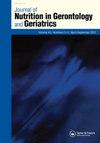Effect of Dietary Weight Loss and Macronutrient Intake on Body Composition and Physical Function in Adults with Knee Osteoarthritis: A Systematic Review
Q3 Medicine
Journal of Nutrition in Gerontology and Geriatrics
Pub Date : 2022-04-03
DOI:10.1080/21551197.2022.2063219
引用次数: 2
Abstract
Abstract Overweight and obesity increase the risk of development and progression of knee osteoarthritis (OA), with higher levels of fat mass and lower levels of lean mass associated with poorer functional status. The aim was to assess changes in weight, body composition and physical function following weight loss or weight maintenance interventions in knee OA. A comprehensive search of four databases was conducted. The risk of bias was assessed using the Quality Criteria Checklist for primary research. Primary outcomes included weight, body composition and physical function; secondary outcomes were lipids, inflammatory biomarkers and muscle strength. Eleven studies were included utilizing diet and exercise (n = 4) or diet-only (n = 7) interventions, two of which were weight maintenance studies. Most studies (n = 10) reported improvements in physical function with significant weight loss, while the change in strength reported in three studies was variable. The diet and exercise studies reported an average reduction in weight of 6.7% and lean mass of 1.6 kg, with greater improvements in physical function. The diet-only studies, including weight maintenance interventions, reported greater average weight loss (7.8%) and reduction in LM (2.0 kg). Overall, better retention of lean mass and muscle strength was observed in participants with higher protein intake (≥37% of energy) and subsequently improved physical function.膳食减肥和大量营养素摄入对成年膝骨关节炎患者身体成分和身体功能的影响:一项系统综述
超重和肥胖增加了膝骨关节炎(OA)发生和进展的风险,高水平的脂肪量和低水平的瘦质量与较差的功能状态相关。目的是评估体重减轻或体重维持干预后膝关节OA患者的体重、身体组成和身体功能的变化。对四个数据库进行了全面检索。使用初级研究的质量标准检查表评估偏倚风险。主要结局包括体重、身体组成和身体机能;次要结局是血脂、炎症生物标志物和肌肉力量。11项研究纳入了饮食和运动(n = 4)或仅饮食(n = 7)干预,其中两项是体重维持研究。大多数研究(n = 10)报告了身体功能的改善和显著的体重减轻,而三个研究报告的力量变化是可变的。饮食和运动研究报告称,他们的体重平均减少了6.7%,瘦体重减少了1.6公斤,身体机能也有了更大的改善。仅饮食的研究,包括体重维持干预,报告了更大的平均体重减轻(7.8%)和LM减少(2.0 kg)。总体而言,高蛋白质摄入(≥37%的能量)的参与者可以更好地保持瘦质量和肌肉力量,并随后改善身体功能。
本文章由计算机程序翻译,如有差异,请以英文原文为准。
求助全文
约1分钟内获得全文
求助全文
来源期刊

Journal of Nutrition in Gerontology and Geriatrics
Nursing-Nutrition and Dietetics
CiteScore
2.20
自引率
0.00%
发文量
13
期刊介绍:
The Journal of Nutrition in Gerontology and Geriatrics publishes original research studies that are directly relevant to clinical and community nutrition issues that affect older adults. Epidemiologic and community-based studies are suitable for JNE, as are well-controlled clinical trials of preventive and therapeutic nutritional interventions. The Journal of Nutrition in Gerontology and Geriatrics invites papers on a broad array of topics in the nutrition and aging field, including but not limited to studies of: preventive nutrition, nutritional interventions for chronic disease, aging effects on nutritional requirements, nutritional status and dietary intake behaviors, nutritional frailty and functional status, usefulness of supplements, programmatic interventions, transitions in care and long term care, and community nutrition issues.
 求助内容:
求助内容: 应助结果提醒方式:
应助结果提醒方式:


